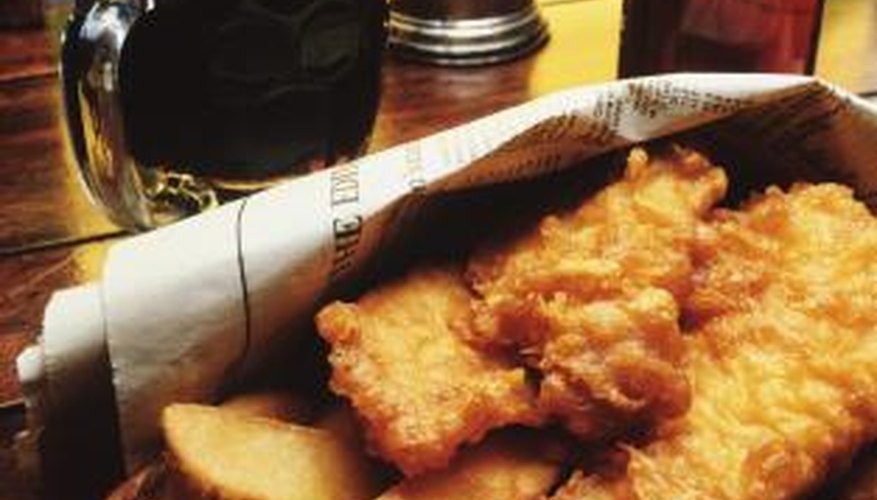Malt vinegar is a brown vinegar obtained by malting barley or another grain. A distilled infusion is created from the malt sugar and allowed to ferment into malt vinegar, which is then filtered and bottled. Malt vinegar is a common pickling agent whose unique taste also makes it a popular addition to brewed alcoholic beverages. It is also a frequent condiment on fish and chips. Malt vinegar can be used for many of the same cleaning applications as white vinegar, although its higher cost and tendency to stain certain fabrics and surfaces makes white vinegar the more popular cleaning choice.
- Malt vinegar is a brown vinegar obtained by malting barley or another grain.
Empty your tea kettle or coffee pot of all liquid.
Pour malt vinegar into the pot. Allow the pot to sit for at least two hours or until all limescale deposits wear away.
Pour out the vinegar. Rinse the inside of the pot with cold water. Clean and dry the pot as you would normally.
Fill a bowl or other small container with malt vinegar.
Place rusted items into the malt vinegar. Cover the rusted item completely with vinegar. Cover the container and allow the items to sit in the vinegar overnight.
- Rinse the inside of the pot with cold water.
- Cover the rusted item completely with vinegar.
Remove the items the next day and rinse under cold water. Scrub any remaining loose flecks of rust with steel wool.
Add 4 cups of malt vinegar to a gallon of clean water.
Dip a clean sponge in the malt vinegar and water mixture. Wash the streaks and dirt from your windows.
- Remove the items the next day and rinse under cold water.
- Dip a clean sponge in the malt vinegar and water mixture.
Crumple newspaper pages and use them to dry the windows. Replace the newspaper when it becomes overly damp and stops drying the window. The vinegar mixture coupled with the newspaper provides clean, streak-free windows.
TIP
Use dish soap and malt vinegar on a damp rag as a general purpose kitchen and bathroom cleanser.
